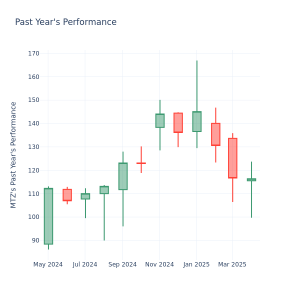
If you make a collision or comprehensive insurance claim for a total loss vehicle, your car insurance company will reimburse you based on the actual cash value of the car — minus your deductible.
This is the price you’d expect to fetch if you sold the vehicle today. It’s very different from the amount you’d need to replace the vehicle with a newer car of the same make and model, because actual cash value (ACV) factors in depreciation.
Here’s a look at how actual cash value works and some tips to maximize your car’s ACV.
An insurance company may deem a vehicle a total loss if the repair costs exceed a certain percentage of the car’s value. This threshold is usually defined by state laws. Some states let insurers decide whether it makes economic sense to repair a vehicle. And some states set a certain percentage, such as 75%. If the repair costs would exceed 75% of the vehicle’s value, the insurer can total it in those states.
There are two ways to look at vehicle values.
-
Actual cash value (ACV). The market value of your vehicle when you factor in car depreciation, or the continual decrease in a car’s value that occurs over time. Essentially, ACV is your car’s current market value.
-
Replacement cost value (RCV). The amount it would cost to replace your car with a newer vehicle of the same make and model.
Learn more: Actual cash value vs. replacement cost: Understanding the difference in home insurance
Most auto insurance policies base reimbursement on the actual cash value of your car, minus your car insurance deductible. (An exception is a classic car insurance policy for agreed value.) For example, say you bought a car for $30,000 and it has depreciated to $20,000. If it’s totaled in a wreck and you have a $1,000 deductible, your insurance company could cut a check for $19,000 ($20,000 ACV – $1,000 deductible).
If your car is financed, the insurance money will go to your lender to put toward your loan and you’ll be responsible for any remaining loan balance. You’ll receive the payout if you own your car outright.
The fact that comprehensive insurance and collision insurance claims will only provide the actual cash value for a totaled car can spell bad news if you owe a significant amount of money on the vehicle. You’re still responsible for paying off your car loan in full if the insurance reimbursement doesn’t cover the full amount you owe. That could mean you still need to make payments on a car you no longer have.
One solution to this situation is to purchase gap insurance. This type of insurance coverage provides a payout for the difference between your car’s actual cash value and the amount you owe. Some lenders require gap coverage if you have a car loan or lease.
In order for your auto insurance company to cover your vehicle’s replacement cost, you’ll need to have new car replacement coverage. Not all auto insurance companies offer this coverage, but those that do often have strict rules. For example, some insurers will only pay to replace your vehicle if it has fewer than 25,000 miles on it or it’s less than two model years old.
An insurance adjuster considers your car’s value based on comparable vehicles in your location. The insurance company also needs to calculate your vehicle’s depreciation. Several factors determine car value, including:
There’s no single formula for determining actual cash value. Since many insurers use proprietary formulas or software from a third-party vendor to calculate ACV, it’s difficult to find an accurate actual cash value calculator online. However, you can get a good estimate of your car’s ACV by plugging in details about the vehicle into J.D. Power Values (formerly NADA Guides).
The best way to maximize your car’s ACV — in case you want to sell it or in case of a worst-case scenario insurance claim — is to minimize depreciation. Here are some proactive steps to take:
-
Choose a vehicle that will hold its value better than other vehicles. For example, among SUVs, the Toyota RAV4, Toyota 4Runner, and Subaru Crosstek are the top SUVs for low depreciation, according to iSeeCars.
-
Keep up with its maintenance. Regular servicing and maintenance will help your car hold its value. Be sure to keep thorough records of maintenance.
-
Try to keep your mileage low. If you can avoid racking up excess mileage on your vehicle by carpooling, walking or biking to work, or finding alternative forms of transportation for longer trips, you can slow your car’s depreciation.
-
Keep the interior and exterior clean. Regularly cleaning and vacuuming the interior, and washing and waxing the exterior will help you keep your vehicle in good condition.
-
Park the car in a safe spot. If you can park your car in a garage, you’ll reduce the chances of damage from severe weather, fender benders, and falling objects, like tree branches.
It’s possible to negotiate your vehicle’s ACV if you disagree with the insurance adjuster’s estimate. Here are some steps you can take:
-
Ask for a total loss valuation report. Ask your insurer for a report that shows the data it used for comparable vehicles to calculate your vehicle’s actual cash value.
-
Provide supporting evidence if you disagree with the insurer’s assessment. Websites like J.D. Power can be helpful in estimating the valuation of a vehicle. You could also look at the pricing of similar vehicles at local car dealerships. Any documentation you have about comparable vehicles will be helpful.
-
Hire an independent appraiser. You may have the option to hire an independent appraiser if your car insurance policy contains an appraisal provision. If the appraiser calculates a higher ACV than your insurer did, you’ll probably have more negotiating power. But if the estimates are roughly equal, you may need to accept your insurer’s calculation.
-
File a complaint. If you have solid evidence that your car was worth more than your insurer is willing to pay, and you can’t resolve the issue with the insurer, you could file a complaint with your state’s insurance department.
If your car is totaled and another driver is at fault, their liability insurance will be on the hook for reimbursing you. But if you were at fault, your insurance company will foot the bill if you have collision coverage.
The insurance company will calculate your vehicle’s actual cash value. The payout will go toward satisfying any outstanding loan balance on the car. You’ll get any money that’s left over.
If your car is destroyed or stolen, it would be better to have your insurance company reimburse you for the car’s replacement cost value, but collision and comprehensive insurance reimburse based on the vehicle’s actual cash value. New car replacement insurance provides reimbursement based on a new vehicle, but it’s not available for most vehicles.



